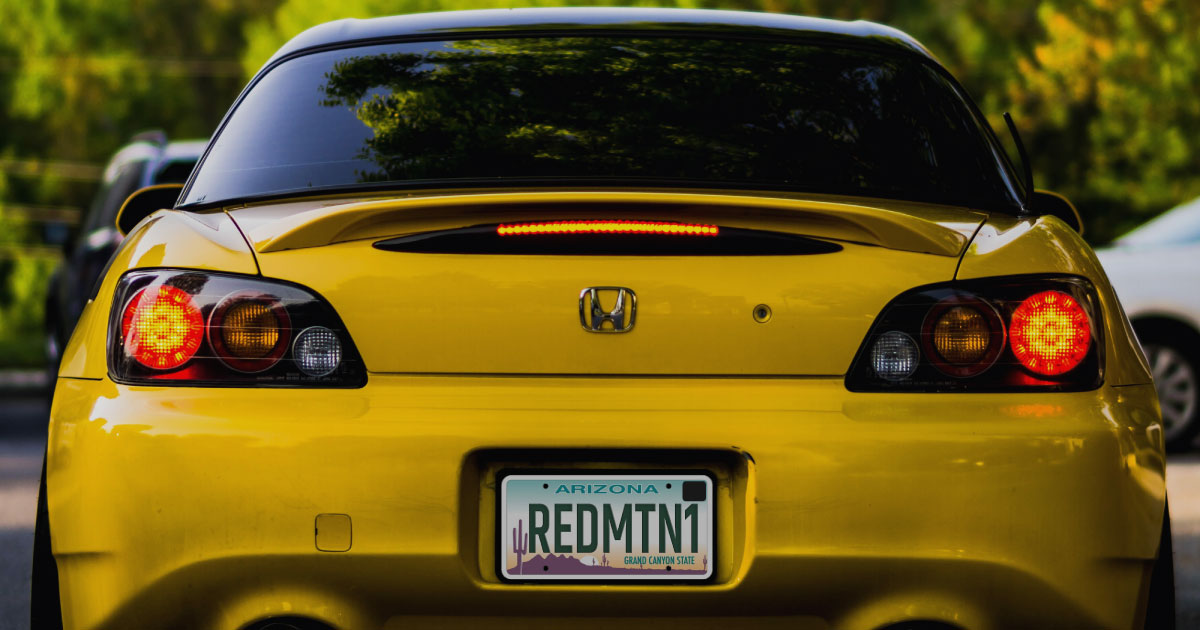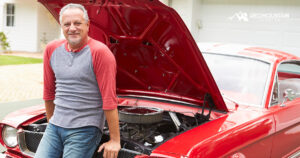Honda Reliability Guide: Our Insights Into the Brand’s Best Models and Years
Honda vehicles have long been known as some of the most reliable and durable vehicles available. They are also fuel efficient, roomy and versatile, stylish, and outfitted with extensive safety and technology features. To make it an even more appealing vehicle, Hondas are more affordable than many other cars on the market.
Even though Hondas are superior in affordability compared to other vehicles, they can still be too expensive for many people. New Hondas, like all new cars, are expensive. Luckily, there are many used Honda models that are great options for people looking for a more affordable choice. Consult this used Honda buying guide to determine which model and year is best for you.
Honda: Supreme Reliability
For these reasons, a reliable Honda vehicle can save you a great deal of money in the long run, firmly cementing Honda’s place as one of the most affordable makes on the market as well. For years, this combination has made Honda the first choice in new and used vehicles across the United States. In fact, wildly positive consumer reviews have caused publications such as Consumer Reports to award top reliability, trust, and affordability ratings to the brand since its introduction into the US market in the 1970s.
However, Honda’s commitment to reliability goes much deeper than simply avoiding time in the shop and keeping drivers happy. Instead, the company has taken a deep dive into what it takes to master the production process to ensure a long-lasting vehicle that truly runs well. As a result, other industry giants like JD Power have consistently named Honda as one of the most reliable brands on the market today.

What Makes Honda So Reliable?
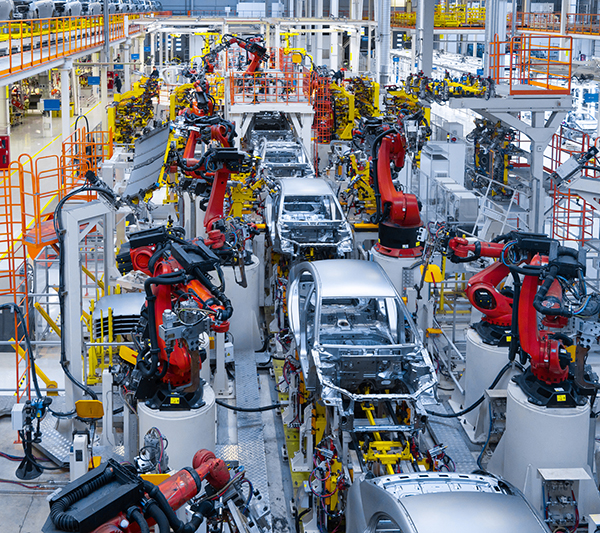
Vehicle reliability begins before the first parts ever roll off the factory line. In the early 20th century, American automaker Henry Ford instituted large-scale changes to his production process and vehicle assembly techniques, culminating in the first use of the moving assembly line in 1913. By the end of the decade, Japanese automakers were traveling to the United States to get a glimpse of the process.
Since then, however, automakers like Toyota and Honda have not only perfected the once-American model of production process control – they’ve improved upon it. In particular, Honda’s systems of monitoring the entire production process allows it to exert a superior level of quality control. When coupled with excruciating attention to detail at the design level, it’s clear that Honda places great value upon its status as one of the most reliable auto makes in the industry.
How Does Honda Stay Reliable?
However strict the design and manufacturing processes are, it’s equally important to ensure lasting quality. Primarily, Honda does this by instituting only the highest standards for its original manufactured parts, meaning that you’re much less likely to suffer a loss in performance due to wear and tear or faulty parts. Honda also holds high quality standards for parts manufactured by other corporations, as well.
In the event that an issue emerges with one of its models, whether within the manufacturing process or with a part supplied from another corporation, Honda uses a process called root cause analysis to determine the source of the issue as well as the best way to address it. This careful attention to solving the genuine cause of a problem is much more effective than attempting to address the issue after the fact. Then, the lessons learned from the issue can be applied to prevent further issues of the same type in subsequent models.
How Does Honda Reliability Compare to Other Manufacturers?
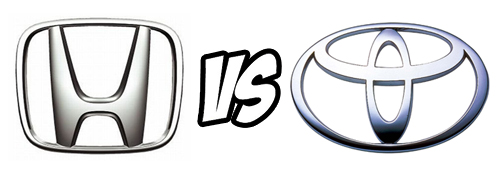
In the years since Toyota’s inception, however, the company has chosen to remain focused strictly on reliability. Typically, Toyota does not participate in research and design to the same extent as other manufacturers – like Honda, in particular. Instead, it implements improvements as it sees fit years after they’re instituted in other brands, resulting in a significant performance, comfort, and technology gap.
As the result of the Toyota corporation’s choices regarding research and development, as well as innovations within its line of vehicles, the brand has remained among the top of all automobile manufacturers with regards to customers’ perception of reliability. However, this spot comes at a significant price when it comes to providing the vehicle features auto buyers want. By contrast, Honda has stepped up its research and technological advances over the past five years, dedicating a steadily increasing amount of time to discovering what buyers need in a vehicle and researching ways to make it happen.
Has Honda Become Less Reliable Over the Years?
This renewed attention to performance and technology has resulted in multiple improvements to many Honda models over the same time period. In this period, Honda has spent time developing smoother and more high-tech transmissions, turbo-charged engines, improved air quality and the associated controls, and instituted a series of changes to the in-car stereo and navigation. These “infotainment” features, while not essential to the continued operation of the vehicle, can perform tasks many drivers find necessary in the digital age.
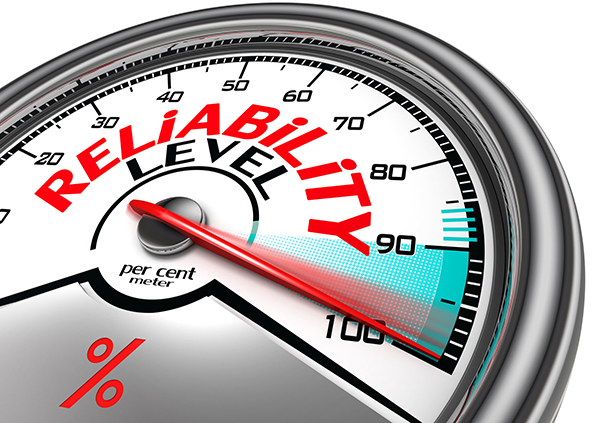
While Honda increased its performance and comfort standards across the board – far surpassing Toyota and other manufacturers – consumers noticed the fact that increased performance sometimes results in a seemingly less reliable car. These new technologies provide significant benefits to the driver, but they may remain consistent for a shorter period of time than previous models. However, both new and used Honda models remain among the most reliable in the industry, all while setting significant performance and comfort standards other manufacturers will mimic in the years to come.
In short, Toyota chooses to focus on reliability, at the expense of performance and the comfort of its drivers. Meanwhile, Honda divides its focus among all three crucial areas of customer satisfaction. The practice has not lowered Honda’s overall reliability but, as newer technologies provide a learning curve and present new troubleshooting situations, popular rating systems have temporarily lowered Honda’s reliability ratings until other manufacturers catch up.
Reliability Takeaways
Although some consumers perceive growing pains with infotainment systems and superior advances in performance as a gap in reliability, those concerns are reflected primarily in survey-based rating systems like Consumer Reports. Similar, temporary dips with brand-new models also occur within the JD Power Awards systems. Still, used models continue to maintain excellent reliability scores.
If you’re in the market for a used Honda vehicle, you can rest assured that across all Honda models, the reliability rating from trusted mechanics remains strong. In fact, Repair Pal lists Honda as its number one reliable make, rating it a solid 4 out of 5 and heading up a list of 32 different manufacturers. Red Mountain Funding’s list of Honda model and year reviews will provide even more insight into the best Hondas for your used car dollar.
Used Honda Civic Reviews
One of the best used Honda models is the Honda Civic. From 1992 to 1995, Honda sold the fifth-generation Civic. Initially, it only came in sedan and hatchback bodies. It was also the first generation to include Honda’s VTEC technology. There were various types of engines, depending on the exact Civic model that you purchased.
In 1996 Honda introduced the sixth-generation Civic and produced different variations of it through the year 2000. Along with sedan and hatchback, it came in a coupe body. The sedans came in three different trims and the engines were either 106 hp or 127 hp, depending on the trim level. Honda also offered the 155-hp HX Civic, a coupe with better fuel economy. In 1999, Honda released the Si trim, which had a 1.6-liter engine good for 160 hp. The next generation had many similar traits with 1.7-liter engines and more options for trim levels. The cars were more fuel efficient and safe, with more room. The main complaint was the lack of anti-lock brakes.
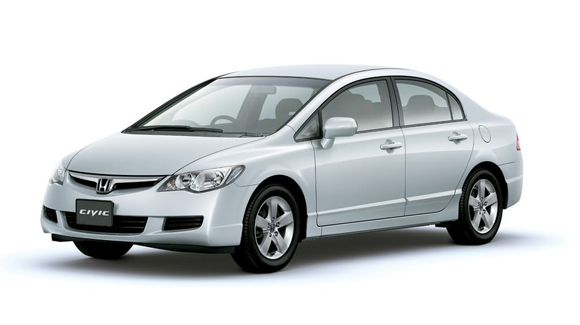
2006 Honda Civic
Many experts prefer the eighth-generation Civics, from 2006 to 2011, over the ninth-generation Civics. The eighth-generation standard Civics in coupe and sedan form had four trim options and a 1.8-liter engine with 140 hp. Honda also released variants such as the Si with a 2.0-liter engine and six-speed manual transmission, GX that ran on natural gas and had a 1.8-liter engine, and Hybrid with a 1.3-liter engine and electric motor.
In 2012, the first year of the ninth generation, people were not as excited about the Honda Civics. Some claim that they were worse in some areas than previous model years. Honda made significant changes to the Civic in 2013 in response to the criticism, improving the handling, suspension, and crashworthiness. It also had a more appealing interior and exterior style.
If you are looking for a great Honda Civic coupe or sedan, look at the eighth generation (2006-2011) or the 2013 model. These years have better handling, higher fuel economy, and many more improved safety features. Avoid the 2012 Honda Civic.
Honda Civic Model Year Comparison
Similar to the Accord, the most common complaints about the Honda Civic were issues with the transmission. The 2001 model was the worst year for Honda Civics. People spent an average of $2,300 fixing transmission failure after 104,000 miles.
The second worst year for Civics was 2002. The complaints were the same as 2001. After an average of 108,000 miles, owners needed to spend an average of $2,300 on a failed transmission.
Though Honda improved the transmission on the Civics after 2002, a new issue appeared in the 2006 model. 2006 Honda Civics had a large number of cracked engine blocks. People with this issue spent an average of $2,700 in repairs after driving 94,000 miles. In the last seven years, Civic owners overall had fewer complaints than with earlier models. The 2006-2011 and 2013 model years received the most positive reactions from experts and owners.
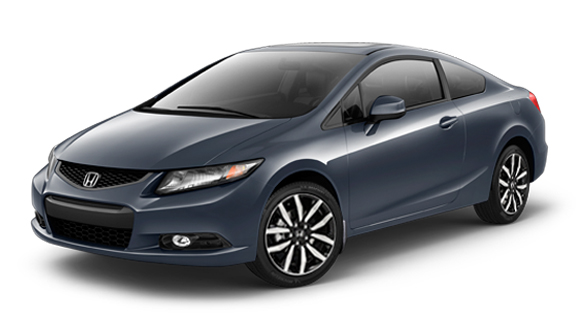
2013 Honda Civic
Used Honda Accord Reviews
Honda introduced the fifth-generation Honda Accord in 1994. It is a good option for people looking for a reliable, less-expensive vehicle. It was the first time Honda used the VTEC variable valve timing system and came with a 4-cylinder engine with an EX-trim level.
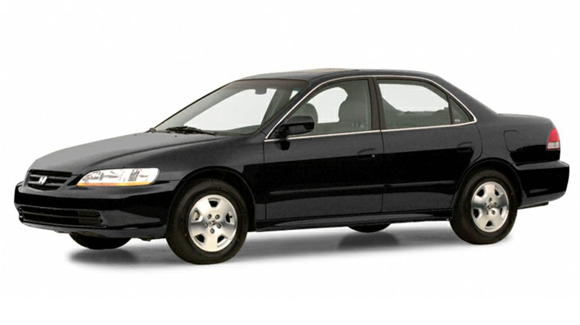
2001 Honda Accord
The sixth-generation Accords from 1998 to 2002 are also great options for used cars. They came in either coupe or sedan body styles. For the power, they had either a four-cylinder engine or V6 power. Experts compared nine cars and this generation of Accord came in second place. Though it is not especially thrilling to drive, it is very easy to operate. Accords made after 2000 have improved safety features but otherwise, the model years in this generation are extremely similar.
Seventh-generation Honda Accords were accompanied by severe complaints, especially the 2003 model year. Many owners complained about issues with the transmissions, including failures that required expensive repairs. People also complained about issues with the interior accessories, body and paint, engine, and climate control.
Honda Accords released between 2008 and 2012, the eighth-generation Accords, received the most complaints of any generation, most of which revolved around the quality of the brakes. A large number of users claimed that the brakes wore down at around 26,000 miles, which is significantly premature. Other complaints included squeaky brakes, warped rotors, scraping sounds, brake vibration, and brakes sticking.
Honda made significant improvements with the current generation. The new generation began in 2013 and there have been far fewer complaints so far than previous model years. Additionally, the largest portion of complaints focuses on interior accessory issues, as opposed to dangerous mechanical issues. If you are in the market for a used Honda, a ninth generation Honda Accord is a great option.
Honda Accord Model Year Comparison
For a more specific analysis of used Honda Accords, it is important to look at the specific model years. Though the 2008 model year has the highest number of complaints, many experts are quick to discourage people from buying 2003 Honda Accords.
In 2003, many of the issues required expensive repairs and caused poor mileage. Transmission failure was a large issue. The average cost to fix issues on Honda Accords in 2003 was $2,700 and the average distance before the transmission failed was 97,000 miles. The 2004 model year saw similar issues. The average cost for the transmission failure was slightly higher at $2,900 after an average of 110,000 miles. 2002 Honda Accord complaints centered around the transmission slipping. The average cost for repairs was $2,400 after an average of 94,000 miles.
Honda CR-Z Model Year Comparison
There are not nearly as many complaints about the Honda CR-Zs, no matter which year you analyze. This could be partially due to the fact that the CR-Z model is a less popular Honda model and, thus, fewer people are reporting issues.
The model year 2011 had the most complaints but experts even more adamantly discourage the 2015 model. The 2015 CR-Z had complaints about uncomfortable seats. The most common complaints for the 2011 model were that fog lights would get condensation in them after an average of 18,000 miles and that paint would peel off after 21,000 miles.
Owners have the most positive reactions about the 2012 Honda CR-Z model year. It is a small hybrid vehicle with impressive handling and a smooth ride for passengers. It only has two seats, but they are designed to be extremely supportive. This model year has enough power to operate as effectively as larger vehicles on the highway.

2012 Honda CR-Z
Honda Prelude Model Year Comparison
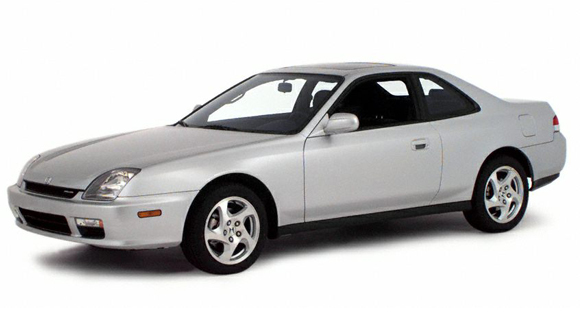
2000 Honda Prelude
The 1992 Honda Prelude has the most complaints, but experts consider the 2001 model to be worse. In 2001, owners reported losing oil through the exhaust. They spent an average of $3,000 to repair the issue after 79,000 miles.
Owners of the 1992 Honda Prelude complained that the engine destroys all the valves when the timing belt breaks and that the timing belt breaks prematurely. After an average of 110,000 miles, owners would be required to spend an average of $2,400 to repair the issue.
Honda Odyssey Model Year Comparison
Similar to the Civics and Accords, the Honda Odyssey models had the most issues with the transmission. Experts consider the 2002 model to be the worst because of the complaints about transmission failure. Owners spent an average of $3,400 after 96,000 miles to repair the problem. The 2003 model had the same issue.
Owners of the recent 2014 version of the Honda Odyssey report issues with the vehicle jerking and making a loud clunking noise. They spent an average of $1,100 to fix it and the issue started occurring after an average of 17,900 miles.
The best Honda Odysseys were made between the years 2005 and 2011. Honda did a major re-design and improved many of the previous issues.
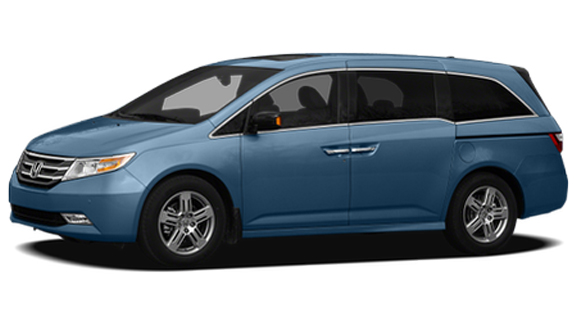
2011 Honda Odyssey
Mesa, Arizona Used Honda Car Financing
At Red Mountain Funding, we want every family and individual to have a car and can help you with loans to make it an option for you. We are honest and affordable and will do everything possible to provide financing for the ideal Honda for you. Simply contact us at (480) 497-8488 for more information.
*This post was originally published June 27, 2018 and was updated February 12, 2020.
I’m a kid at heart disguised as an auto researcher and business owner. I’ve always enjoyed providing insight in the form of reviews (anime, video games, autos, etc.) When I’m not researching, I’m spending time with my family, driving my Dodge Challenger, riding my motorcycle, and finding new entrepreneurial pursuits.
